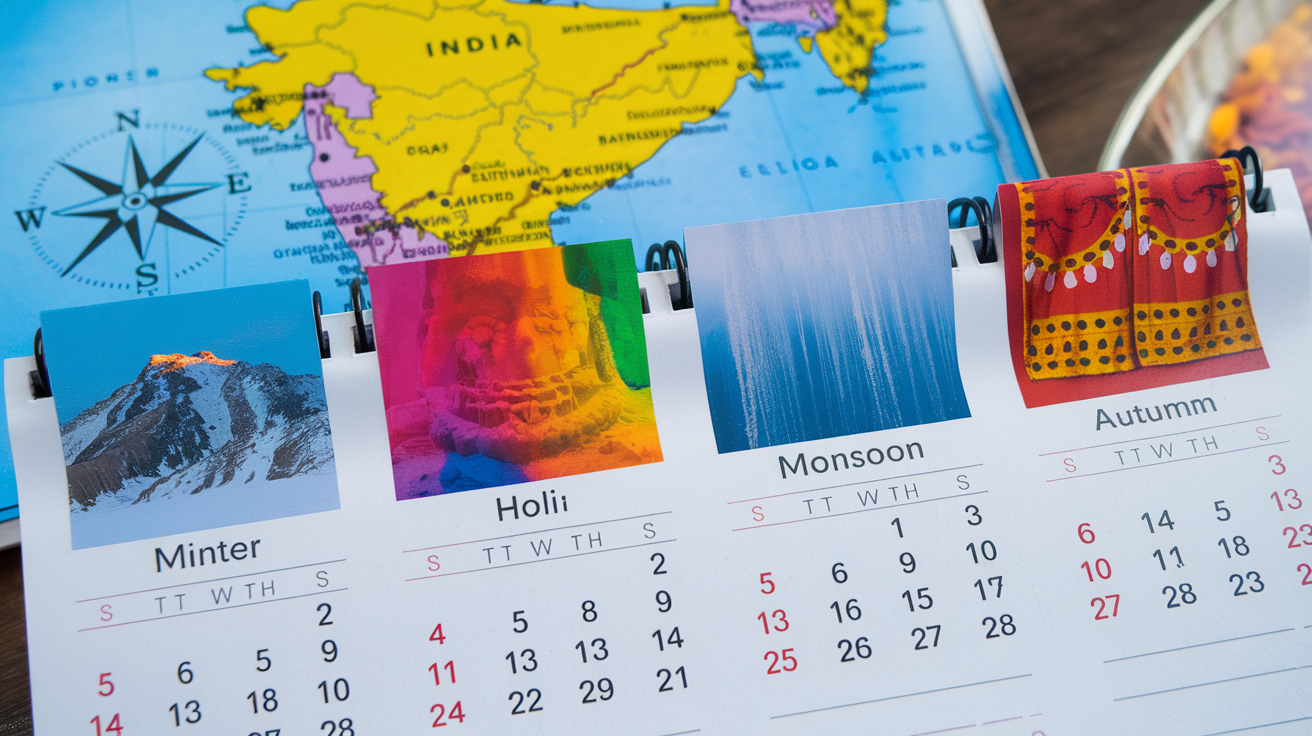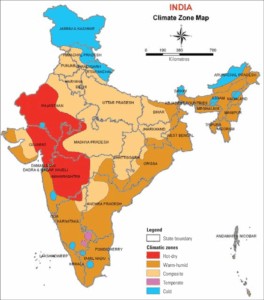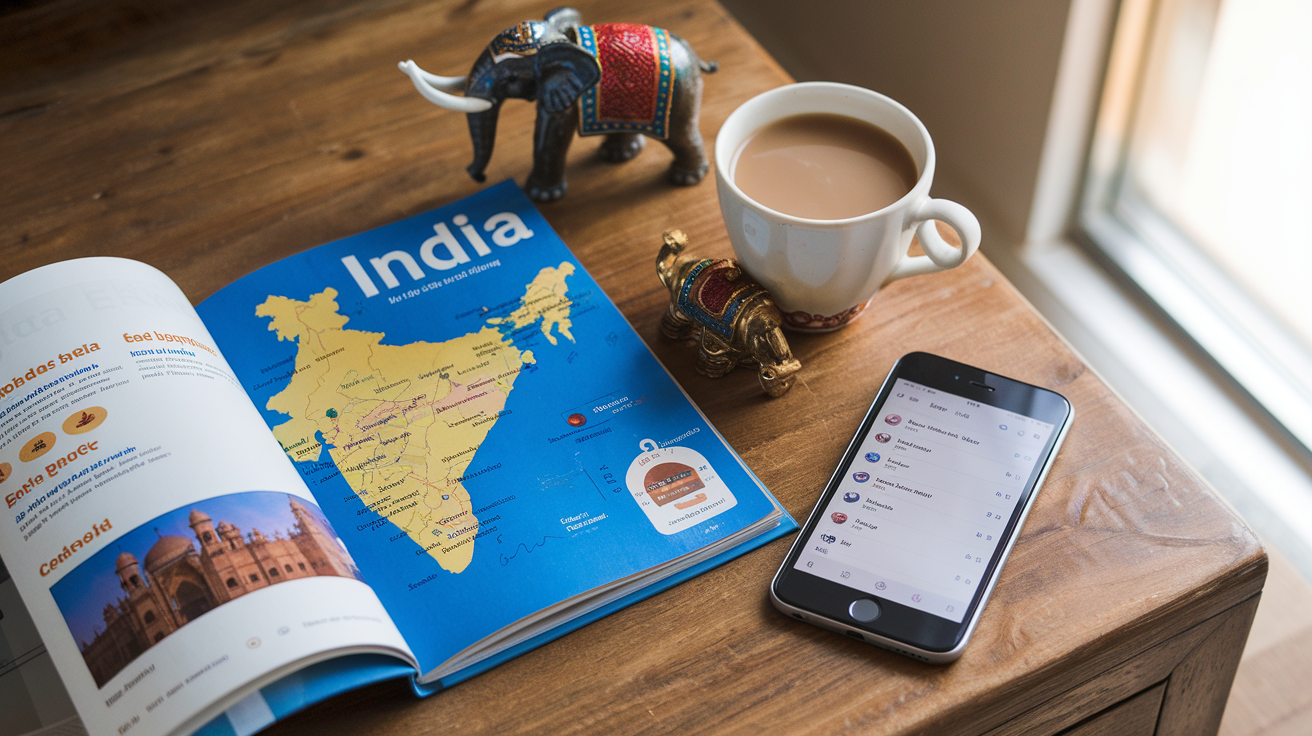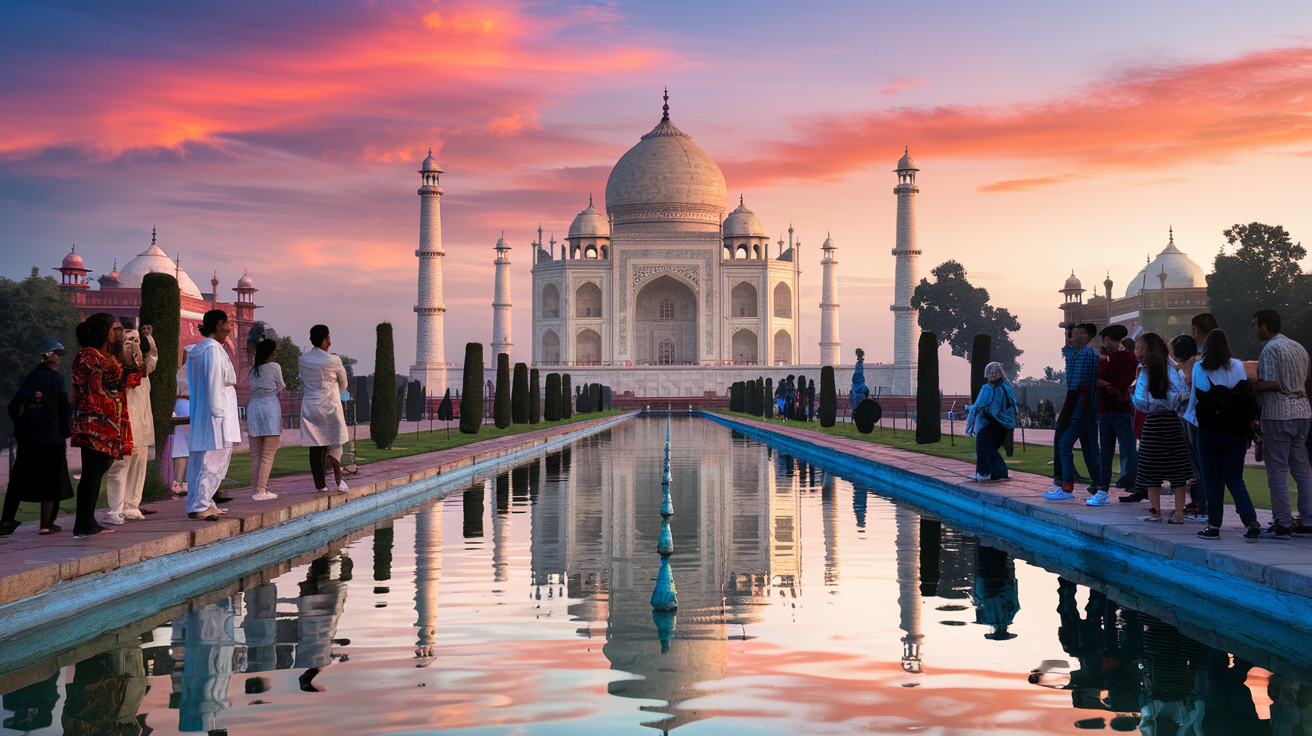Ever planned a trip to India only to be greeted by monsoon floods or sweltering 110°F heat? Trust me, timing is everything when visiting this vast subcontinent.
I’ve made this mistake so you don’t have to. After multiple visits across seasons, I can finally answer the eternal question: when is the best time to visit India?
This guide breaks down the perfect months for each region – from the snow-capped Himalayas to the tropical beaches of Kerala. You’ll discover exactly when to book your tickets for your specific Indian adventure.
But here’s what most travel blogs won’t tell you about Indian seasons…
Month-by-month guide for travelling in India

January: Northern Chill, Southern Warmth
January hits India with stark contrasts. Northern spots like Delhi and Agra shiver with temps around 7-15°C – perfect for sightseeing without breaking a sweat. Meanwhile, down south in Kerala and Goa, you’re looking at beach-perfect weather (25-30°C).
This is peak tourist season across most of India, so expect higher prices and crowded attractions. Worth it though? Absolutely, if you can swing it.
February-March: Festival Fun
February brings comfortable weather nationwide, making it arguably the sweet spot in India’s travel calendar. The Taj Mahal without sweating through your shirt? Yes please.
March sees temperatures climbing but remains pleasant. Don’t miss Holi (Festival of Colors) when streets explode with vibrant colored powders and water fights. Trust me, you’ll never look at your white t-shirts the same way again.
April-June: Summer Scorcher
Unless you’re heading to hill stations like Shimla or Darjeeling, prepare for serious heat (35-45°C). This is when locals themselves escape to cooler spots.
Wildlife enthusiasts, take note: summer offers the best animal sightings as creatures gather around limited water sources. Tiger spotting at Bandipur? Much better now than during monsoon.
July-September: Monsoon Magic
Rain transforms India into lush green landscapes. Kerala’s backwaters and the Western Ghats showcase spectacular waterfalls during monsoon season.
Travel gets cheaper, but expect humidity, potential flooding, and occasional disruptions. Perfect for budget travelers willing to dodge raindrops for better deals.
India Climate Guide

Understanding India’s Diverse Climate
India’s weather isn’t one-size-fits-all. With its massive size spanning from the Himalayas to tropical beaches, the climate varies dramatically across regions. This diversity means the best time to visit India depends entirely on where you’re heading.
Northern India Seasons
The north (Delhi, Agra, Rajasthan) follows four distinct seasons:
- Winter (November-February): Cool and pleasant (10-25°C) – perfect for sightseeing
- Summer (March-June): Brutally hot (30-45°C) – avoid unless you love sweating
- Monsoon (July-September): Humid with unpredictable rainfall
- Post-monsoon (October): Warm days, cooler nights – a sweet spot for travelers
Southern India Weather Patterns
South India (Kerala, Tamil Nadu) plays by different rules:
- Dry season (November-April): Warm but manageable (25-35°C)
- Southwest monsoon (June-September): Heavy rainfall on the west coast
- Northeast monsoon (October-December): Wet period for the east coast
Monsoon Considerations
Monsoon season transforms India. While tourist crowds thin out and prices drop (making it the cheapest time to travel to India), you’ll deal with:
- Flooding in urban areas
- Humidity that makes you feel like you’re in a steam room
- Limited outdoor activities
- Absolutely stunning green landscapes that photographers dream about
The silver lining? Those wildlife resorts in India truly shine during post-monsoon when the vegetation is lush and animals gather around water sources.
Trip ideas and travel guides for exploring India

India’s Golden Triangle & Tigers
Looking to experience the essence of India in one trip? The Golden Triangle (Delhi-Agra-Jaipur) plus a tiger safari delivers exactly that. This route works perfectly during the best time to visit India – October to March, when temperatures are pleasant and wildlife spotting chances peak.
Spend 3-4 days exploring Delhi’s contrasting old and new sectors before heading to Agra for the Taj Mahal (tip: catch it at sunrise). Then discover Jaipur’s pink-hued architecture and bustling bazaars.
The magic happens when you add Ranthambore National Park to this itinerary. During winter months, tigers emerge from hiding as water sources shrink. Many wildlife resorts in India offer package deals during this season, but book months ahead as this coincides with India peak tourist season.
For first-time India itinerary planning, 10-14 days is ideal for this circuit. Avoid monsoon season (June-September) when many parks close and rural roads become challenging.
Classic Rajasthan Tour: Forts, Palaces & Rural Villages
Rajasthan delivers India’s most iconic experiences – think majestic forts, lavish palaces, and authentic village life. The ideal time? November to February, when desert temperatures drop to comfortable levels.
Start in Udaipur, India’s most romantic city, then explore Jodhpur’s blue-washed old town. Continue to Jaisalmer’s golden fortress before ending in royal Jaipur.
What makes this route special are the rural villages between major cities. Places like Narlai, Chanoud and Nimaj offer intimate glimpses into traditional Rajasthani life.
For an unforgettable experience, spend nights in converted India palace hotels – many former royal residences now welcome guests with regal hospitality but at varying price points.
What to Do in India: Our Highlights Guide
India overwhelms first-timers with possibilities, so prioritize these experiences:
- Sunrise at the Taj Mahal – Worth the 5am wake-up call. Visit Taj Mahal for details.
- Varanasi’s riverside rituals – Most powerful during dawn boat rides. Visit Varanasi for trip planning.
- Kerala’s backwaters – Best explored on overnight houseboat stays. Visit Kerala for details.
- Himalayan trekking – April-June offers clear mountain views
- Desert camping in Rajasthan – Magical during winter months
For how many days in India first time visitors should plan, consider at least 2 weeks. India’s size and transportation challenges make shorter trips rushed.
The cheapest time to travel to India falls during summer (April-June) and monsoon (July-September). While you’ll find bargains, prepare for extreme heat or rain depending on region.
An Expert Guide to Experiencing Festivals in India
Timing your visit around India’s festivals transforms a good trip into an unforgettable one. India’s festival calendar follows lunar cycles, so dates shift annually – check an India travel guide 2023 for specifics.
Major highlights include:
- Holi (March) – Experience this color festival in Mathura or Vrindavan for authenticity
- Diwali (October/November) – Best celebrated in Jaipur or Amritsar
- Pushkar Camel Fair (November) – Book accommodations a year ahead
- Kerala’s Onam (August/September) – One festival worth experiencing during monsoon season
Festival periods typically coincide with India travel seasons’ peaks, so expect higher prices and crowds. Book transportation and accommodations months in advance.
The festival experience varies dramatically by location – smaller towns often offer more authentic celebrations than tourist centers. Research local customs beforehand to participate respectfully.

Discovering the perfect time to visit India largely depends on your destination and interests. The winter months (November to February) offer pleasant temperatures for exploring bustling cities and cultural sites, while summer retreats like Himachal Pradesh, Uttarakhand, and Kashmir provide relief from the heat elsewhere. The monsoon season brings lush landscapes but may disrupt travel plans in certain regions.
Before planning your Indian adventure, consider regional climate patterns, festival schedules, and your personal preferences. Whether you’re drawn to Rajasthan’s majestic forts, Kerala’s serene backwaters, Tamil Nadu’s amazing temples, or Goa’s pristine beaches, timing your visit strategically will enhance your experience. Pack accordingly, embrace the diversity, and prepare for an unforgettable journey through this vibrant subcontinent.
To listen to a podcast on when is the best time to visit India, check Incredible India Travel.
Discover more from Great Holiday Ideas
Subscribe to get the latest posts sent to your email.